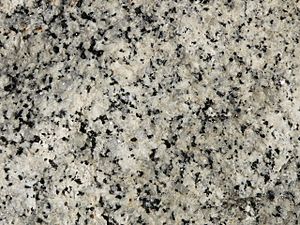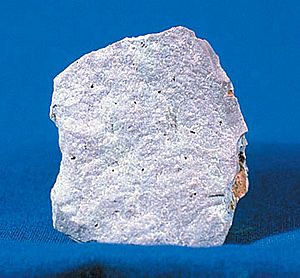Felsic facts for kids
The word felsic is a term used by geologists, who are scientists who study rocks and the Earth. It helps them describe certain types of minerals, magma (melted rock), and igneous rocks. These rocks and minerals are rich in lighter elements like silicon, oxygen, aluminium, sodium, and potassium.
Felsic rocks are usually light in color, like white, pink, or light gray. They also have a low specific gravity, which means they are not very dense. The most common felsic rock you might know is granite. Other examples include quartz, muscovite, and orthoclase. Felsic rocks are the opposite of mafic rocks, which are usually darker and denser.
How Felsic Rocks Are Classified
For a rock to be called felsic, it generally needs to be made of more than 75% felsic minerals. These key minerals are quartz, orthoclase, and plagioclase. If a rock has more than 90% felsic minerals, it can also be called leucocratic. This fancy word simply means 'light-colored'.
The way a felsic rock looks, especially its texture, helps scientists give it a specific name. Here are some examples:
- Granite pegmatite is a felsic rock with very large crystals.
- Granite has coarse grains, meaning you can easily see the individual mineral crystals.
- Porphyritic granite is similar to granite but has some much larger crystals mixed in with smaller ones.
- Rhyolite is a fine-grained felsic rock, so its crystals are too small to see without a microscope.
- Porphyritic rhyolite is fine-grained like rhyolite but also has some larger crystals.
- Rhyolitic tuff or breccia are formed from volcanic ash and rock fragments.
- Pumice is a very light and bubbly felsic rock, full of tiny holes from gas bubbles.
- Obsidian or porcellanite are felsic rocks that look like glass.
See also
 In Spanish: Félsico para niños
In Spanish: Félsico para niños




